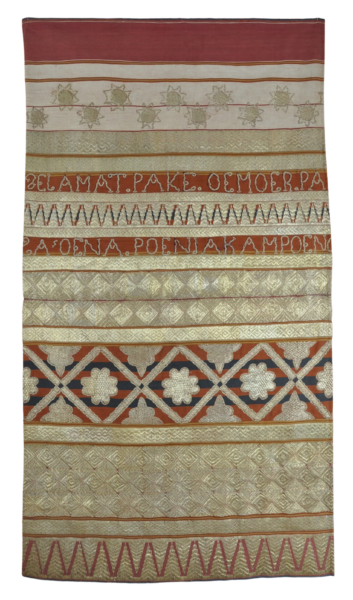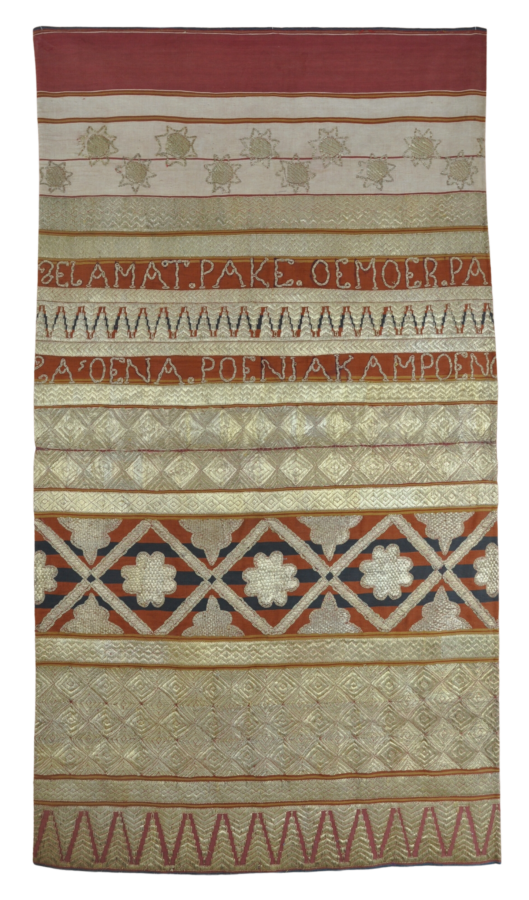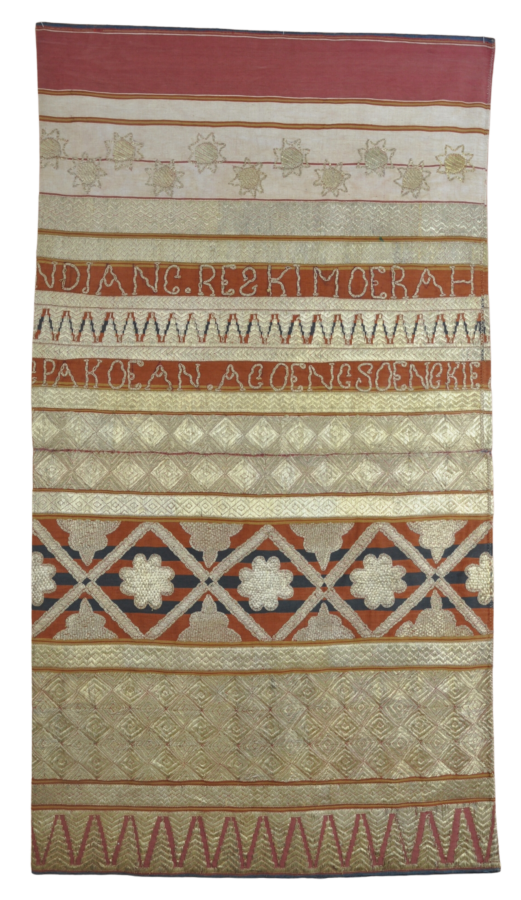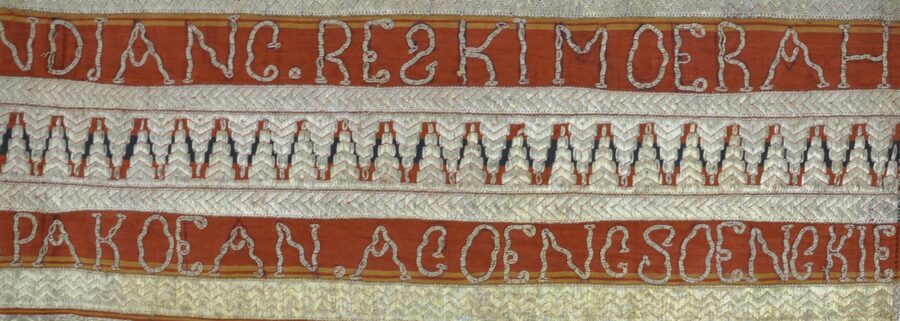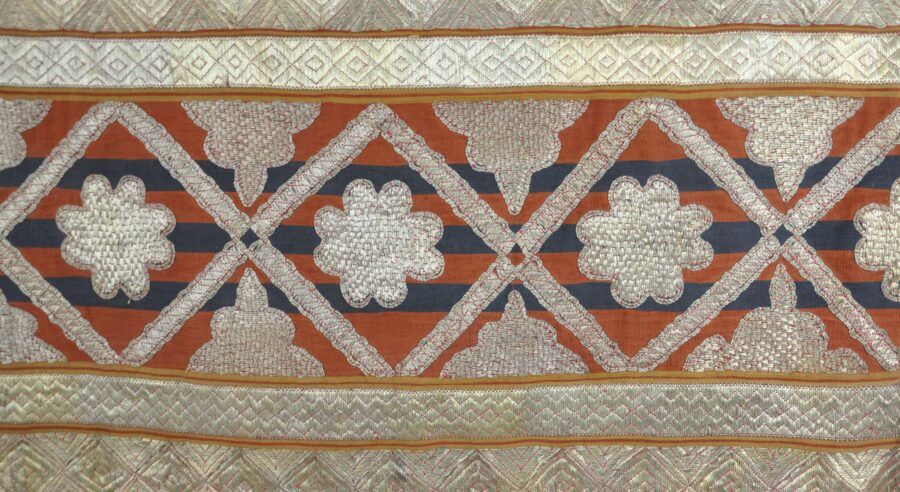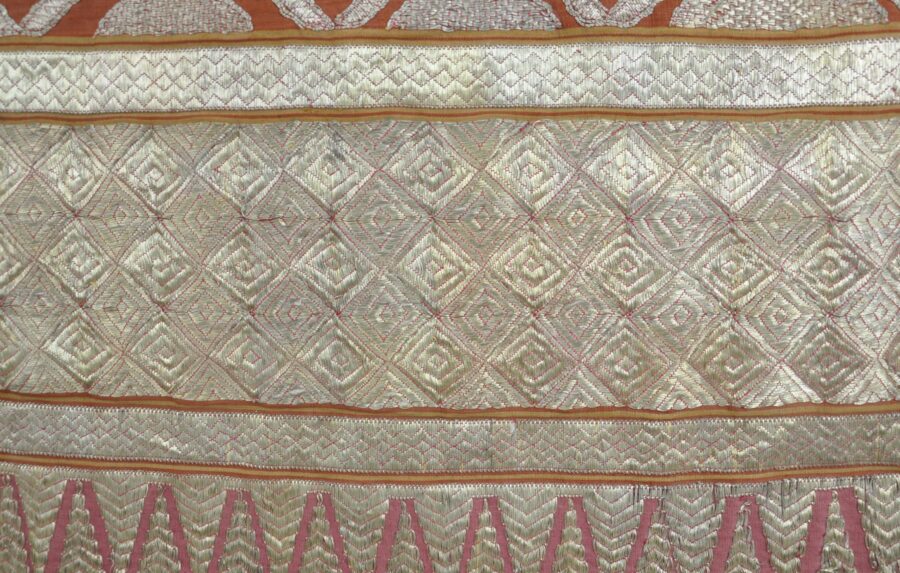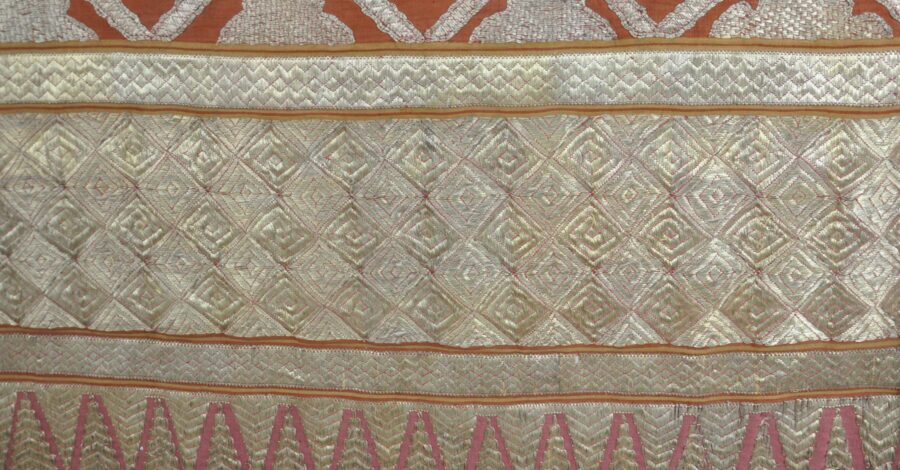This tapis (ceremonial skirt) is from the people of North Lampung in South Sumatra. It remains closed along the seam and sewn as a skirt (rather than having been opened for display purposes).
It comprises silk-cotton dyed with indigo, orange and red dyes and is densely embroidered with metallic thread wrapped in gold in geometric patterns and triangular pucuk rebang (bamboo shoot) and eight-pointed flower or star motifs.
It has also been couched in gold-wrapped thread on both sides with two bands of script, in the localised version of Malay. The script appears to identify the village (kampoeng) where the textile was made and also appears to suggest the sub-ethnic group to which the weaver belongs – the Sungkai – a small Lampung sub-group within North Lampung.
The extraordinary use of gold-wrapped thread makes the skirt heavy – almost too heavy to be worn comfortably, and so such skirts were worn for only brief periods and for ceremonial occasions. Indeed, among such skirts, this example is unusually densely embellished with gold to the point whereby the underlying base cloth no longer is visible and instead is covered in a wall of gold-wrapped thread.
See Totton (2009, p. 38) for a related example.
One name given to this genre of cloths – tapis tua – literally means the ‘ancient skirt’ (Maxwell, R., 2003, p, 184.) But the Abung term for this specific type is tapis dewasano (‘fully-laden cloth’), or tapis jung sarat in Indonesian (Totton, 2009, p. 99).
This spectacular use of gold-wrapped thread confirms the skirt’s origins from among the people of Lampung. Noblewomen wore such cylindrical skirts on ceremonial occasions. Or such skirts were worn by brides from wealthy families. The wealth for such ostentations displays was afforded by the lucrative pepper trade with which the south of Sumatra became associated during the colonial era, and which benefited the Lampung people directly.
The skirt is in excellent condition. There are few or no losses and no repairs.
References
Brinkgreve, F., & D.J. Stuart-Fox (eds), Living with Indonesian Art: The Frits Liefkes Collection, Rijksmuseum Volkenkunde, 2013.
Maxwell, R.,S ari to Sarong: Five Hundred Years of Indians and Indonesian Textile Exchange, NGA, 2003a.
Maxwell, R., Textiles of Southeast Asia: Tradition, Trade and Transformation, Periplus, 2003b.
Totton, M.L., Wearing Wealth and Styling Identity: Tapis from Lampung, South Sumatra, Indonesia, Hood Museum of Art, 2009.
Vanderstraete, A., Magie van de Vrouw: Weefsels en Sieraden uit de Gordel van Smaragd, (The Magic of Women), Wereldmuseum, 2012.


